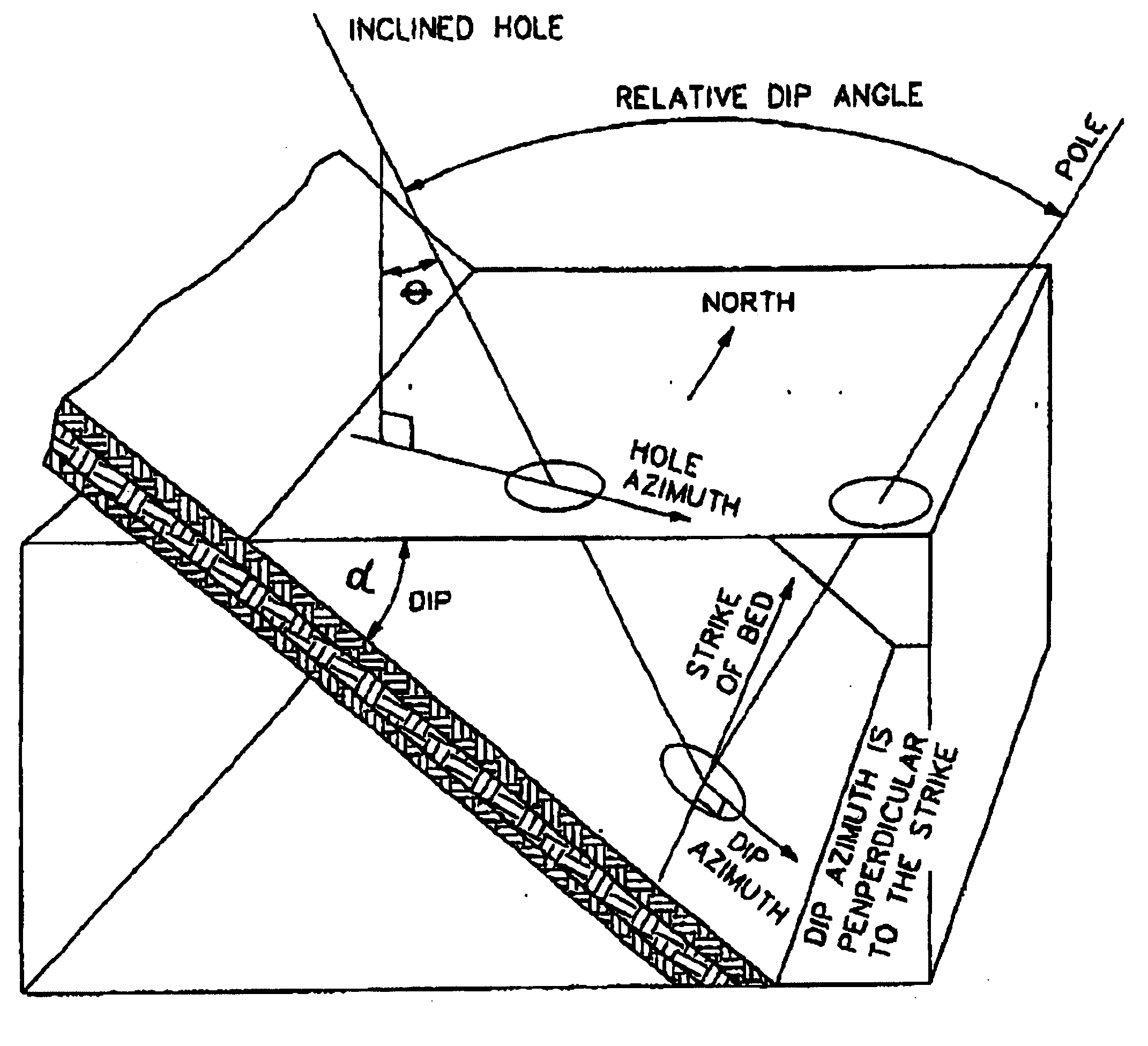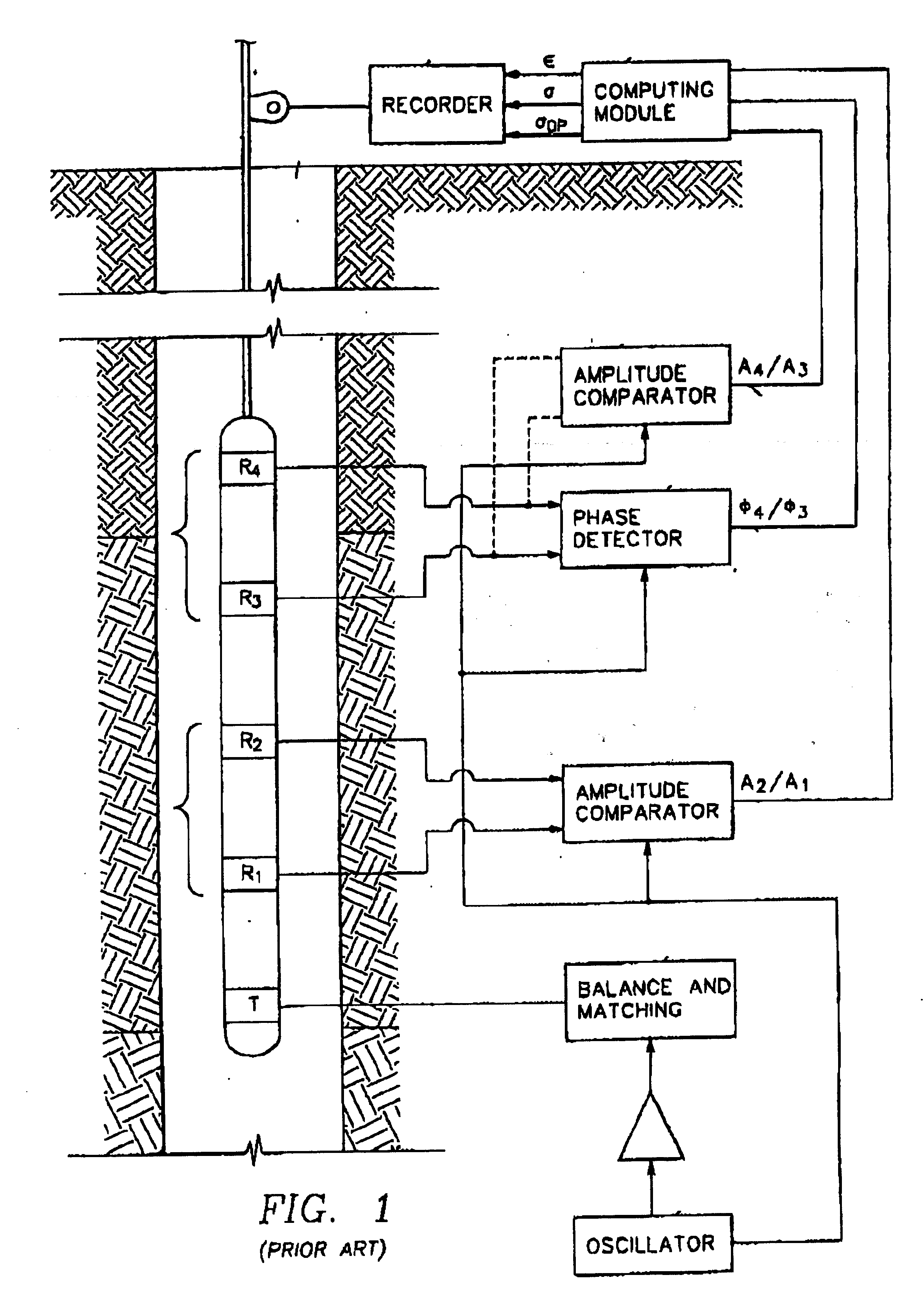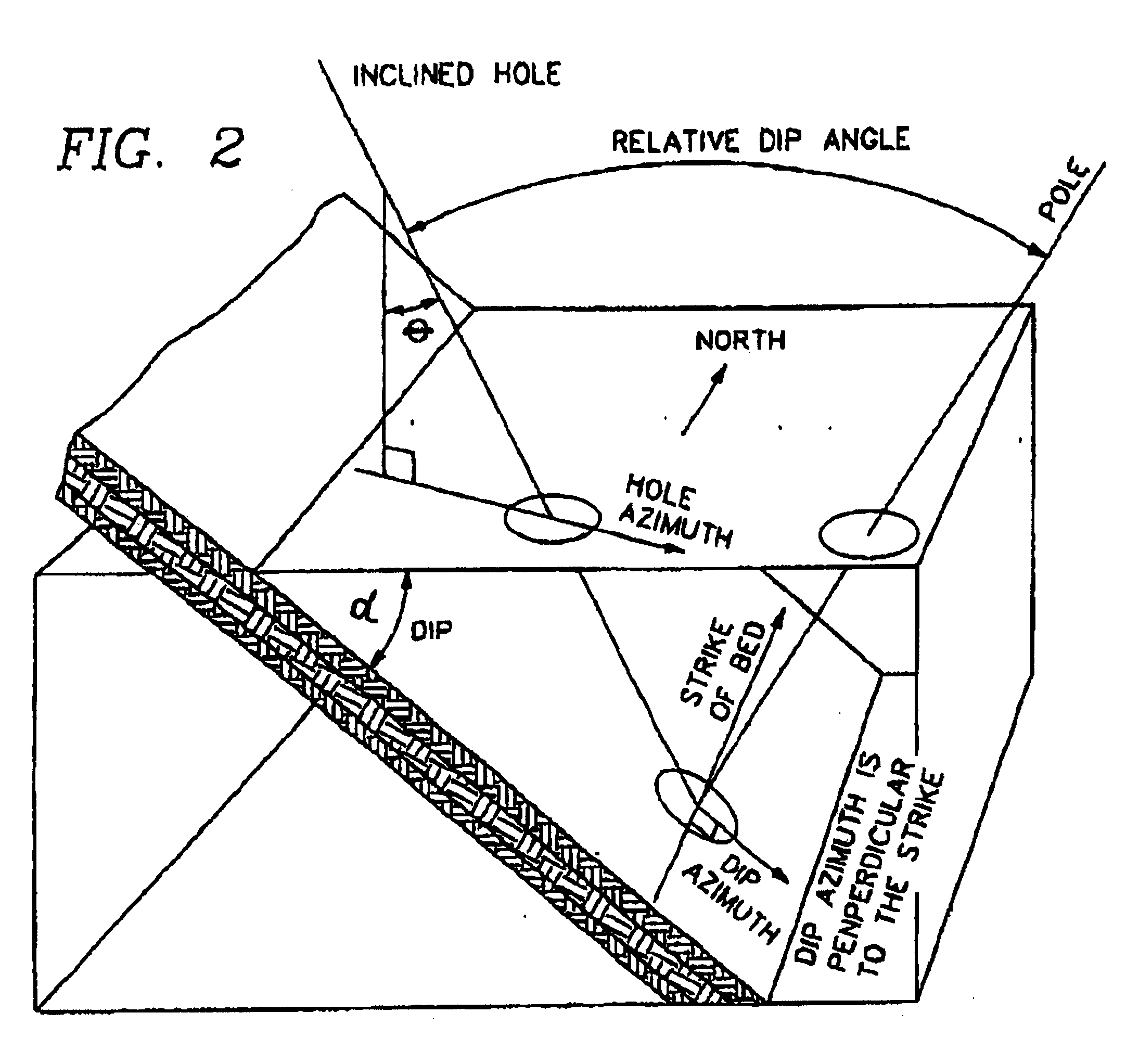Method for determining parameters of earth formations surrounding a well bore
- Summary
- Abstract
- Description
- Claims
- Application Information
AI Technical Summary
Problems solved by technology
Method used
Image
Examples
Embodiment Construction
Generally, processing of log data from a well bore uses an iterative inversion scheme having essentially two parts. The first part contains a forward solver that generates a synthetic log from given test information. The second part contains criteria to modify the test formation. The criteria is based upon the differences between a synthetic log, corresponding to the test formulation, and the real log measured by the well tool. After the test formation has been modified, a new synthetic log is generated by the forward solver. This process is repeated iteratively until the difference between the synthetic log and real log is a less than a predefined tolerance. The output and the inversion algorithm are the parameters of the final test formation. It should be pointed out, however, that the repeated computation of the forward model in each iteration makes these methods computationally intensive and require a great deal of processing time.
Referring now to FIG. 4, there is illustrated a ...
PUM
 Login to View More
Login to View More Abstract
Description
Claims
Application Information
 Login to View More
Login to View More - R&D
- Intellectual Property
- Life Sciences
- Materials
- Tech Scout
- Unparalleled Data Quality
- Higher Quality Content
- 60% Fewer Hallucinations
Browse by: Latest US Patents, China's latest patents, Technical Efficacy Thesaurus, Application Domain, Technology Topic, Popular Technical Reports.
© 2025 PatSnap. All rights reserved.Legal|Privacy policy|Modern Slavery Act Transparency Statement|Sitemap|About US| Contact US: help@patsnap.com



